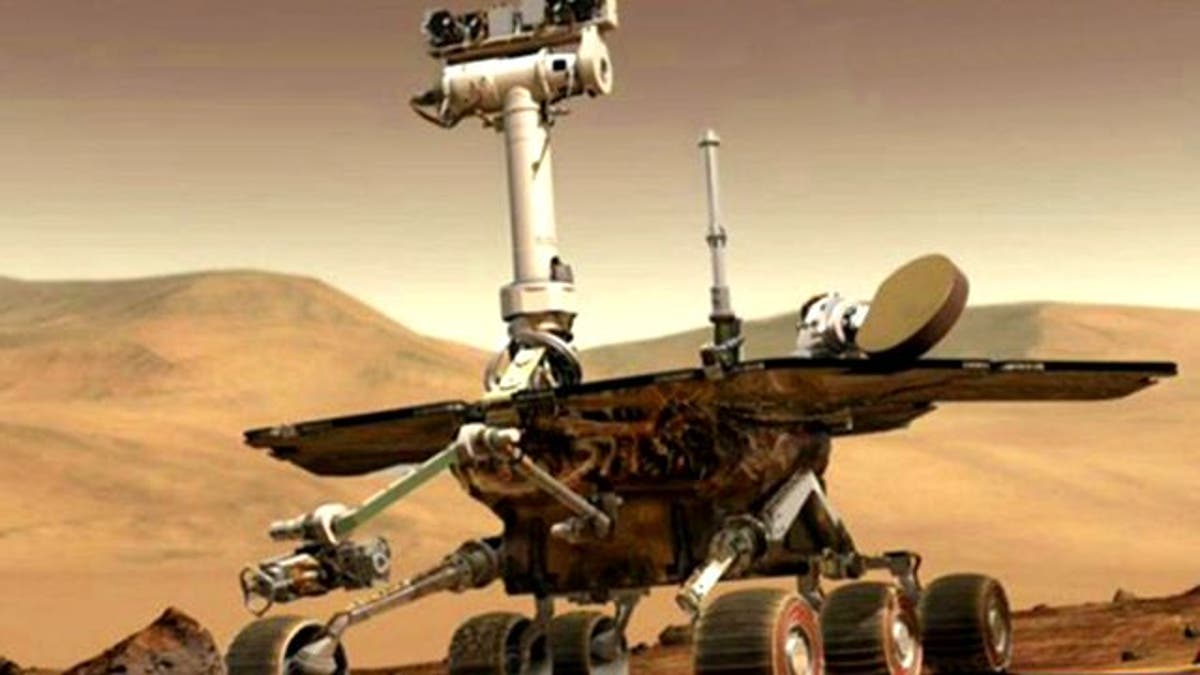
NASA plans to drop nearly $310 million from the budget for its Planetary Science division in 2013, a 20 percent cut that affects future missions to Mars, lunar science, and the study of the outer planets.
The cuts are part of a $17.7 billion budget request NASA unveiled Monday a mere 0.3 percent cut from the 17.8 billion Congress approved in November for 2012. But it represents a 5 percent cut from the $18.7 billion President Barack Obama penciled in for 2013 in the five-year budget he sent to Congress this time last year.
And it leaves NASA funded at its lowest level in four years, forcing the space agency to juggle priorities and "devastating planetary science," said Bill Nye, CEO of space exploration group The Planetary Society.
“Science is the part of NASA that’s actually conducting interesting and scientifically important missions," Nye said in a statement about the 2013 budgetary figures. "Spacecraft sent to Mars, Saturn, Mercury, the Moon, comets, and asteroids have been making incredible discoveries, with more to come from recent launches to Jupiter, the Moon, and Mars."
"The country needs more of these robotic space exploration missions, not less.”
NASA administrator Charles Bolden defended the restructuring in a statement accompanying the new budget.
“NASA's Fiscal Year 2013 budget moves the Agency forward strongly on a path that will maintain America's preeminence in space exploration,” he wrote.
It’ll just have to do that with less money.
The Planetary Science division took the biggest hit, falling to about $1.2 billion in 2013 from $1.5 billion in 2012. That means Mars exploration will suffer. After an already mostly built Mars mission in 2013, future journeys to the Red Planet are eliminated, put on hold or restructured.
In NASA’s explanation, the proposed budget “restructures future long-term Mars missions to better integrate our science and human Mars exploration efforts.”
The Planetary Society sees it differently, stating that the new budget will force NASA "to walk away from planned missions to Mars, delay for decades any flagship missions to the outer planets, and radically slow the pace of scientific discovery, including the search for life on other worlds."
The proposal would also cut $309 million for studying planets this year, with more cuts in future years. That said, NASA’s overall budget for space exploration is about $4.1 billion.
Much of the cuts resulted from increases and cost overruns on the ambitious but expensive James Webb Space Telescope, which will increase by 21 percent. The telescope, which may cost $8 billion in the long run, is the successor to the Hubble Space Telescope and would peer further into the universe and back in time than ever.
The budget would double the amount of money spent to help private firms develop their own spaceships that could eventually carry astronauts and others to the International Space Station as taxis. This would replace the now retired space shuttle program and the dependence on Russia for rides into orbit. The president wants to spend $829.7 million to help these companies, but Congress has regularly cut his commercial space proposals. The budget includes the last bit of spending on the retired space shuttles: $71 million.
Much of the spending continues a trend shifting from current space missions to developing the next generation of rockets and capsules for flights out of Earth's orbit to an asteroid or even to Mars. The president proposes an extra $345 million in spending on developing new rocketry and space technology. That overall proposal includes $1.8 billion for a congressionally mandated large rocket that could carry bigger loads further into space and $1 billion for the Orion crew capsule to take astronauts to new places.
A first test flight of the spaceships -- without astronauts -- could be as early as 2017, with astronauts flying in them no earlier than 2021.
The agency also announced it would trim its workforce by 250 employees, “right-sizing” the space agency at 18,000 full time employees.
“I encourage whoever made this decision to ask around; everyone on Earth wants to know if there is life on other worlds,” Nye said. “When you cut NASA’s budget in this way, you’re losing sight of why we explore space in the first place.”
The Associated Press contributed to this report.
